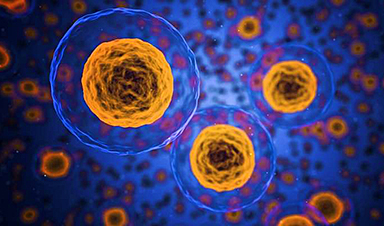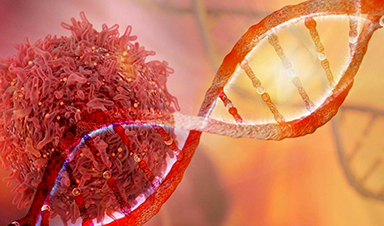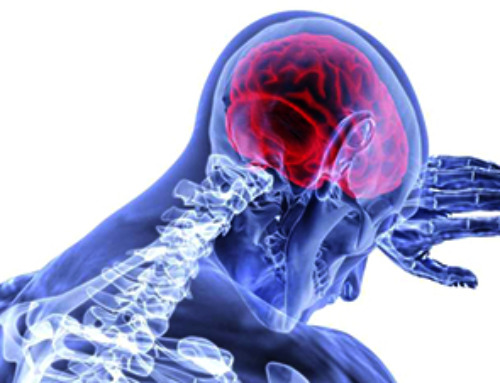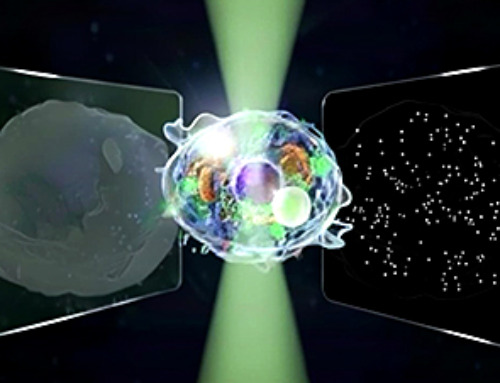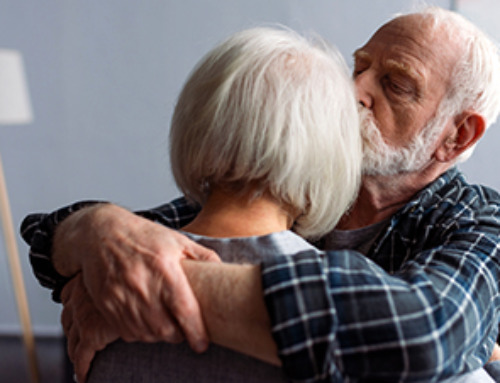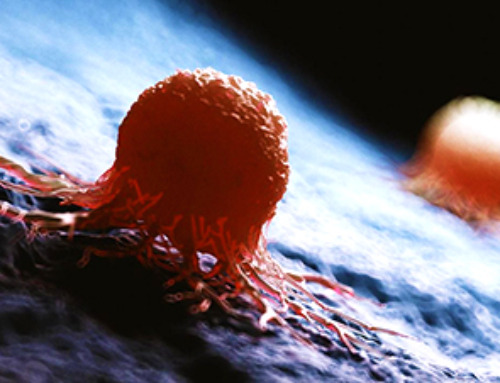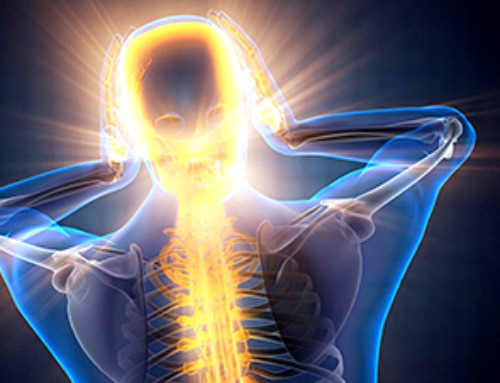A team of international researchers led by scientists at City of Hope provides the most thorough account yet of an elusive target for cancer treatment. Published in Science Advances, the study suggests a complex signaling process involving paxillin, a focal adhesion protein that acts as a hub to connect with other proteins, may be vulnerable to therapy despite its fluid state.
“Disrupting the interaction of paxillin with focal adhesions bears direct relevance in cancer treatment,” said Ravi Salgia, M.D., Ph.D., the Arthur & Rosalie Kaplan Chair in Medical Oncology at City of Hope’s comprehensive cancer center. “This can lead to precision therapeutics targeting a specific paxillin function that is dominant in cancer cells, but less prevalent in healthy cells.”
The research adds important new details on a hard-to-characterize network of cellular proteins. Dr. Salgia and his team looked closely at paxillin, which prompts cells to change in response to the environment. This helps cancer cells to evolve and evade detection, while also causing resistance to treatment. Dr. Salgia and his team have been working on elucidating the function of paxillin for over three decades. He and his colleagues were the first to clone the full-length human gene in 1995 at Harvard.
To better understand paxillin’s role, the team turned to one of its main binding partners, known as focal adhesion kinase or FAK. The search has proved daunting. These two proteins share a large number of residues needed for binding and are in a constant state of flux. Paxillin is also a heavily disordered protein.
The team narrowed its investigation to characterize only the most relevant structures. Eventually, they found a steady contrast to the disorder. When paxillin and C-terminal targeting domain of FAK (FAT) interact at a specific docking site, they must shrink in size and stay that way to fit a restricted space. Nevertheless, they continue to exert a great deal of flexibility when interacting with the broader focal adhesion network.
“Our results point to a novel mechanism of protein interaction that is less studied in the literature and indicates the possibility of such mechanisms to be applicable to other disordered proteins,” said Dr. Salgia. “This study has broad implications for disordered proteins in general.”
Such protein interactions are typically deemed difficult to control with therapy since there is no clear site for a drug to home in on. But in capturing what they saw, Dr. Salgia and his team were able to construct a model that could help other researchers identify a moving target.
The discovery was made possible by a lot of clever lab work. Utilizing a type of spectroscopy related to medical magnetic resonance imaging (MRI), that is often employed to study physics, the team was able to better understand the structural characteristics of paxillin. The team then combined spectroscopy with dynamic simulations to show how paxillin binds to FAT. Finally, the team created a computer 3D model to demonstrate how this interaction plays out.
“The combination of all these methods enabled us to accurately characterize the structural features of the paxillin-FAK interaction more than any single method on its own,” said Supriyo Bhattacharya, Ph.D., assistant research professor in the Department of Computational and Quantitative Medicine at City of Hope, the first and co-senior author and lead in protein structure and data analysis in the study.
In addition to Dr. Salgia and City of Hope authors Bhattacharya and Prakash Kulkarni, Ph.D., a research professor in the Department of Medical Oncology & Therapeutics Research at City of Hope (an expert in disordered protein), the team included researchers from the University of Maryland, John Orban, Ph.D., (co-senior author and expert in spectroscopic techniques), and the National Institute of Standards and Technology.
More information: Supriyo Bhattacharya et al, Conformational dynamics and multimodal interaction of Paxillin with the focal adhesion targeting domain, Science Advances (2025). DOI: 10.1126/sciadv.adt9936
News
Very low LDL-cholesterol correlates to fewer heart problems after stroke
Brigham and Women's Hospital's TIMI Study Group reports that in patients with prior ischemic stroke, very low achieved LDL-cholesterol correlated with fewer major adverse cardiovascular events and fewer recurrent strokes, without an apparent increase [...]
“Great Unified Microscope” Reveals Hidden Micro and Nano Worlds Inside Living Cells
University of Tokyo researchers have created a powerful new microscope that captures both forward- and back-scattered light at once, letting scientists see everything from large cell structures to tiny nanoscale particles in a single shot. Researchers [...]
Breakthrough Alzheimer’s Drug Has a Hidden Problem
Researchers in Japan found that although the Alzheimer’s drug lecanemab successfully removes amyloid plaques from the brain, it does not restore the brain’s waste-clearing system within the first few months of treatment. The study suggests that [...]
Concerning New Research Reveals Colon Cancer Is Skyrocketing in Adults Under 50
Colorectal cancer is striking younger adults at alarming rates, driven by lifestyle and genetic factors. Colorectal cancer (CRC) develops when abnormal cells grow uncontrollably in the colon or rectum, forming tumors that can eventually [...]
Scientists Discover a Natural, Non-Addictive Way To Block Pain That Could Replace Opioids
Scientists have discovered that the body can naturally dull pain through its own localized “benzodiazepine-like” peptides. A groundbreaking study led by a University of Leeds scientist has unveiled new insights into how the body manages pain, [...]
GLP-1 Drugs Like Ozempic Work, but New Research Reveals a Major Catch
Three new Cochrane reviews find evidence that GLP-1 drugs lead to clinically meaningful weight loss, though industry-funded studies raise concerns. Three new reviews from Cochrane have found that GLP-1 medications can lead to significant [...]
How a Palm-Sized Laser Could Change Medicine and Manufacturing
Researchers have developed an innovative and versatile system designed for a new generation of short-pulse lasers. Lasers that produce extremely short bursts of light are known for their remarkable precision, making them indispensable tools [...]
New nanoparticles stimulate the immune system to attack ovarian tumors
Cancer immunotherapy, which uses drugs that stimulate the body’s immune cells to attack tumors, is a promising approach to treating many types of cancer. However, it doesn’t work well for some tumors, including ovarian [...]
New Drug Kills Cancer 20,000x More Effectively With No Detectable Side Effects
By restructuring a common chemotherapy drug, scientists increased its potency by 20,000 times. In a significant step forward for cancer therapy, researchers at Northwestern University have redesigned the molecular structure of a well-known chemotherapy drug, greatly [...]
Lipid nanoparticles discovered that can deliver mRNA directly into heart muscle cells
Cardiovascular disease continues to be the leading cause of death worldwide. But advances in heart-failure therapeutics have stalled, largely due to the difficulty of delivering treatments at the cellular level. Now, a UC Berkeley-led [...]
The basic mechanisms of visual attention emerged over 500 million years ago, study suggests
The brain does not need its sophisticated cortex to interpret the visual world. A new study published in PLOS Biology demonstrates that a much older structure, the superior colliculus, contains the necessary circuitry to perform the [...]
AI Is Overheating. This New Technology Could Be the Fix
Engineers have developed a passive evaporative cooling membrane that dramatically improves heat removal for electronics and data centers Engineers at the University of California San Diego have created an innovative cooling system designed to greatly enhance [...]
New nanomedicine wipes out leukemia in animal study
In a promising advance for cancer treatment, Northwestern University scientists have re-engineered the molecular structure of a common chemotherapy drug, making it dramatically more soluble and effective and less toxic. In the new study, [...]
Mystery Solved: Scientists Find Cause for Unexplained, Deadly Diseases
A study reveals that a protein called RPA is essential for maintaining chromosome stability by stimulating telomerase. New findings from the University of Wisconsin-Madison suggest that problems with a key protein that helps preserve chromosome stability [...]
Nanotech Blocks Infection and Speed Up Chronic Wound Recovery
A new nanotech-based formulation using quercetin and omega-3 fatty acids shows promise in halting bacterial biofilms and boosting skin cell repair. Scientists have developed a nanotechnology-based treatment to fight bacterial biofilms in wound infections. The [...]
Researchers propose five key questions for effective adoption of AI in clinical practice
While Artificial Intelligence (AI) can be a powerful tool that physicians can use to help diagnose their patients and has great potential to improve accuracy, efficiency and patient safety, it has its drawbacks. It [...]
